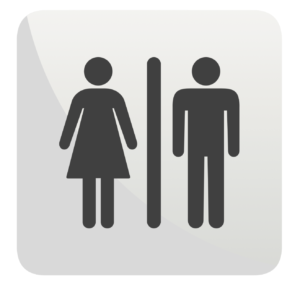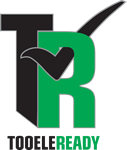Water and Sewer Disruption

Actions for Water and Sewer Disruption
Utility Shut-Off and Safety
Water quickly becomes a precious resource that may become unavailable or contaminated following many disasters. It is important that emergency drinking water is kept on hand, and that all household members learn how to shut off and isolate the water supply to their residence.
-
-
- Clearly label the water shut-off valve and learn to turn off the water supply.
- Shut-off valves maybe found immediately adjacent to your home, near the hot water heater or at the main water meter, usually near the street.
- Ensure the valve can be fully turned off. If a special tool is needed, make sure one is readily available.
- Shut off the main valve to prevent contamination of the water supply in your water heater and plumbing. It is also important to know where the main controls are located for gas and electricity and to know how to turn them off. When disaster strikes it often affects one or more of the utility systems in your home.
-
How to Store Water
When water is properly stored it will remain safe to drink indefinitely. Emergency water should be stored in thoroughly washed/sterilized plastic containers that are tightly sealed. The stored water should be kept in a cool, dark place to prevent algal and bacteria growth and to prevent the deterioration of the container. To ensure the safety and freshness of the supply, change emergency water once every 6 months.
If your emergency water hasn’t been recently replaced or your water supply has a bad odor and taste you should purify it before using it for drinking, food preparation or hygiene. Boiling water and disinfection with household liquid bleach will kill most microbes that cause diseases such as dysentery, typhoid and hepatitis. BOILING is the safest method of purifying water. Bring water to a rolling boil for 3-5 minutes, keeping in mind that some water will evaporate. Let the
water cool before drinking.
Disinfecting With Bleach
-
-
- Add 16 drops of bleach per gallon of water.
- Stir and let stand for 30 minutes
- If water does not have a slight bleach odor, repeat the dosage and let water stand for another 15 minutes.
-
It is important to only use household liquid bleach that contains 5.25% sodium hypochlorite. Do not use scented bleaches, color safe bleaches or bleaches with added cleaners. Other water treatments such as iodine sold at camping stores do not contain 5.25% sodium hypochlorite as the only active ingredient and are not recommended for water disinfection.
It’s important to NEVER mix bleach with any cleaner containing ammonia, as this can create a toxic gas!
How to Build a Makeshift Toilet
•If sewage lines are broken but the toilet bowl is usable, place a garbage bag inside the bowl
• If the toilet is completely backed up, make your own toilet by lining a medium-sized bucket with a garbage bag. Make a toilet seat out of two boards placed parallel to each other across the bucket. An old toilet seat will also work Sanitize Waste – After each use, pour a disinfectant, such as bleach and kitty litter, into the container. This will help avoid and control infection and stop the spread of disease
• Cover the container tightly when not in use Waste Disposal
• Bury garbage and human waste to avoid the spread of disease by rats and insects
• Dig a pit 2 to 3 feet deep and at least 50 feet downhill or away from any well, spring or water supply
• If the garbage cannot be buried immediately, strain any liquids into the emergency toilet
• Wrap the residue in several layers of newspapers and store it in a large can with a tightfitting lid. Place the can outside until it can be buried.
Emergency Sanitation
After a major disaster, if water and sewage lines have been disrupted or damaged, you may need to improvise emergency sanitation facilities.
Always have basic sanitation supplies on hand:
➤ Medium-sized plastic bucket with tight lid
➤ Household chlorine bleach
➤ Toilet paper
➤ Plastic garbage bags and ties (heavy duty)
➤ Soap, liquid detergent
➤ Towelettes
➤Kitty Litter

